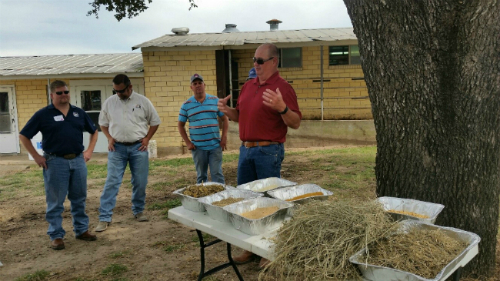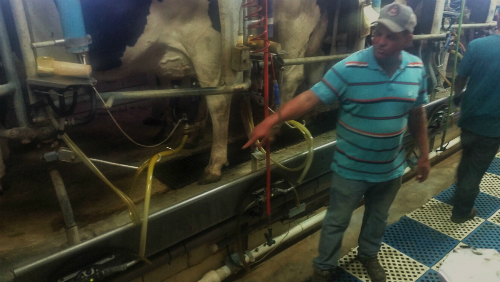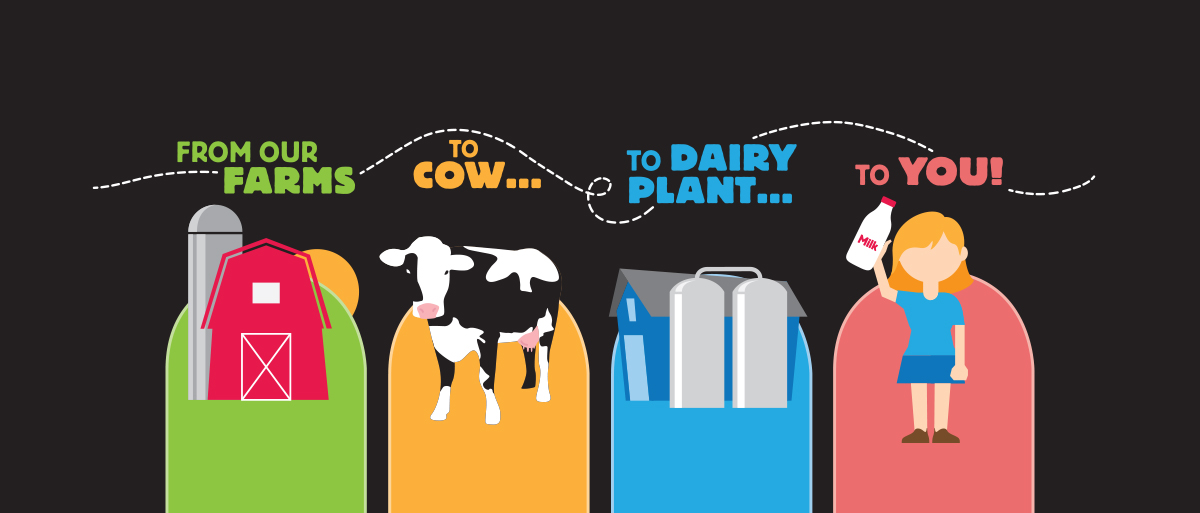As far back as I can remember, I have loved all things dairy:
- I have to have milk to get me going in the morning.
- I usually have eight different kinds of cheese in my fridge (if you are wondering, two are reduced-fat).
- In college I took a dairy science class.
- On vacation a few years ago, I stayed at the Liberty Hill Farm Inn, a working dairy farm in Vermont.
When I saw the invitation to join Dairy MAX on a “Farm to Fridge” tour, I did not hesitate. About 20 Houston-area registered dietitian nutritionists boarded a bus for a short ride down the highway to Kainer Dairy in Weimar, Texas. We were fortunate to be able to ask any and all questions of the Dairy MAX team on our ride out. Beautiful and breezy weather welcomed us as we were greeted by the Kainer family, who have owned and operated the dairy for 57 years. Their family friend, Glenn – who is their ruminant/animal nutritionist – also joined the tour.

Road entrance to Kainer Dairy in Weimar, Texas.

Animal nutritionist discusses feed on Kainer Dairy Farm in Weimar, Texas.
Did you know that 95% of all dairy farms are family-owned?
The average Texas dairy farm may house up to 650 cows, with 90% of the herd being Holsteins. There are six breeds typically used for dairy production. A single Holstein produces 9 gallons of milk per day, with other breeds closer to 7 gallons of milk a day. The Kainers own 250 Holsteins that are milked mechanically twice daily.

Milking Parlor at Kainer Dairy Farm in Weimar, Texas.

Farmer discussing the milking process on Kainer Dairy Farm in Weimar, Texas.
Did you know a gallon of milk weighs 8.6 pounds?
The dairy capital of Texas is currently in Lamb County, which is midway between Amarillo and Lubbock. Nowadays, there are not many dairy farms left below Interstate 20, with climate and the price of land playing a role.
There are about 48,000 dairy farms in the U.S. Fifteen years ago, that number was closer to 250,000. The number of dairy cows has dwindled as well, from 44 million to 9.3 million in the past 60 years, but farms are producing more milk now due to efficiencies in cow genetics, technology and animal nutrition.
Did you know global demand for milk increases when school starts and before the holidays?
The average gestational age, or the time a heifer is pregnant, is 286 days, or 9 months. She will produce milk for 300 days of the year, then she will rest for 60 days. She will produce one calf every year. Glenn explained to us the science behind creating the perfect “cow casserole,” as their diet is at least 40% roughage or fiber, and each cow eats about 52 pounds of dry matter each day. That’s a lot of feed!
Did you know cows like the flavors of molasses, green apples and licorice?
Milk is tested for safety and quality at every step from the farm to the supermarket. The Kainers, just like all dairy farm families, would like us to know that their long hours and hard work ensure that we are purchasing a safe, nutritious product.




